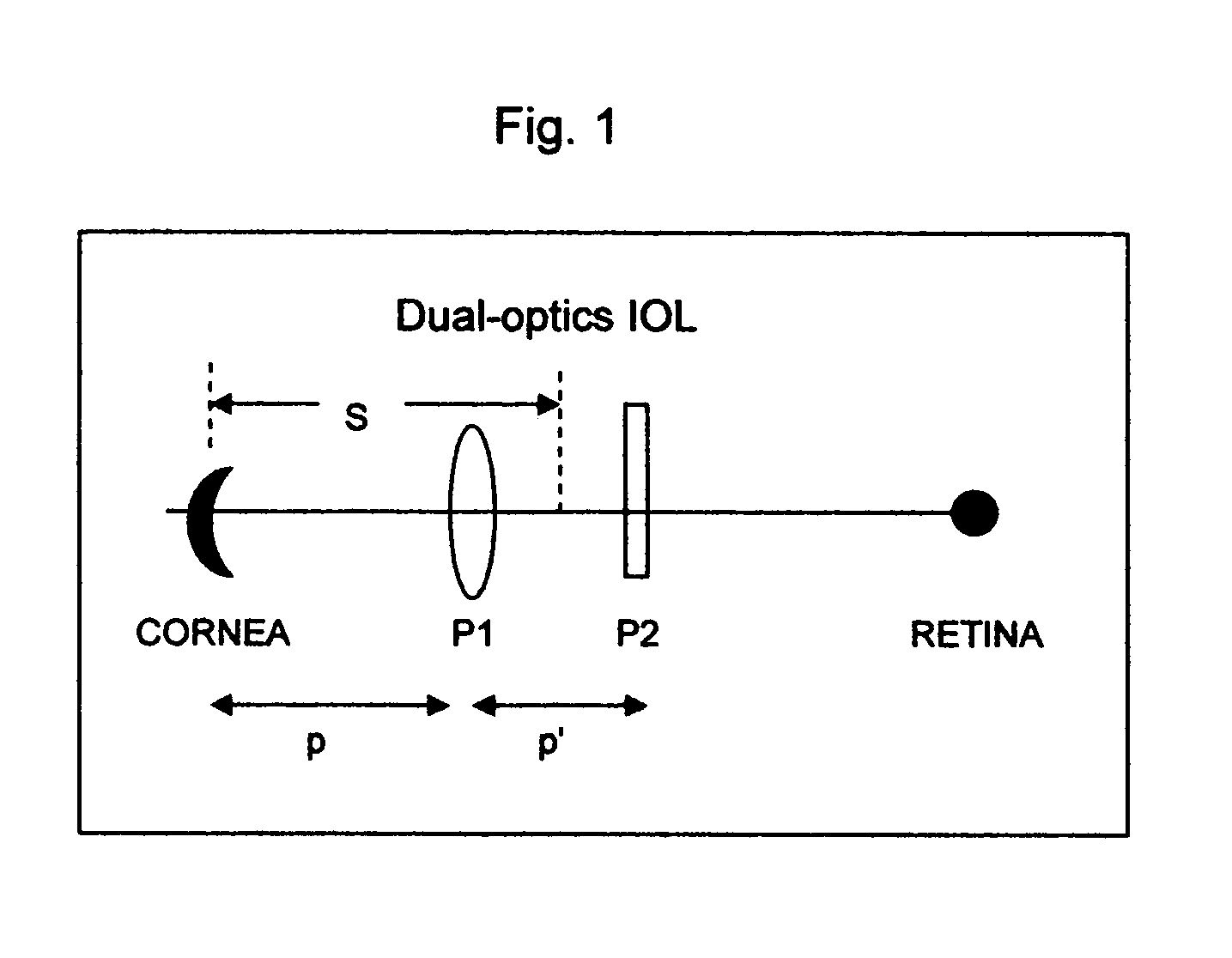Method and device for vision correction via dual-optics accommodating intraocular lens
a dual-optics, intraocular lens technology, applied in intraocular lens, medical science, prosthesis, etc., can solve the problems of no analytic formula available for dual-optics, all existing iol designs suffered a limited improvement of accommodation
- Summary
- Abstract
- Description
- Claims
- Application Information
AI Technical Summary
Benefits of technology
Problems solved by technology
Method used
Image
Examples
Embodiment Construction
The New Formulas
[0021]
TABLE 1Formulas and definitions for dual-optics accommodating IOL(Lin, in Mastering IOLs: Principles and Innovations. NewDelhi, Jaypee Brothers Pub. 2006).A = M(dS1) + M′(dS2)M = (P1 / P)Mo − CM′ = (P2 / P)Mo′− CMo = 1336(1 / F2 − Z2 / fc2)Mo′ = 1336(Z1 / F2 − 1 / fc2)C = Z2(P1P2 / 1336)Zj = 1 − (p′ / 1336)Pj, j = 1, 2Z = 1 − S / fc, S = p + p′(P2 / P)where (referred to FIG. 1):A = accommodation amplitude (for both optics are mobile)dSj = movement of the front-optics (j = 1), back-optics (j = 2)(P1, P2) = power of the (front, back)opticsP = P1 + Z1P2, total power of the dual-optics IOL (P = 1336 / F).p = distance of the front-optics and corneap′ = distance of the front-optics and back-opticsS = effective position of the front-opticsfc = effective focal length of the cornea related to its power byfc = 1336 / Dc.P = P2 + (Z2)P1 = P1 + (Z1)P2
[0022]As shown in Table 1, the accommodating amplitude (A) of a dual-optics AIOL is given by two components
A=M(dS1)+M′(dS2), (1)
where the M-functio...
PUM
 Login to View More
Login to View More Abstract
Description
Claims
Application Information
 Login to View More
Login to View More - R&D
- Intellectual Property
- Life Sciences
- Materials
- Tech Scout
- Unparalleled Data Quality
- Higher Quality Content
- 60% Fewer Hallucinations
Browse by: Latest US Patents, China's latest patents, Technical Efficacy Thesaurus, Application Domain, Technology Topic, Popular Technical Reports.
© 2025 PatSnap. All rights reserved.Legal|Privacy policy|Modern Slavery Act Transparency Statement|Sitemap|About US| Contact US: help@patsnap.com



